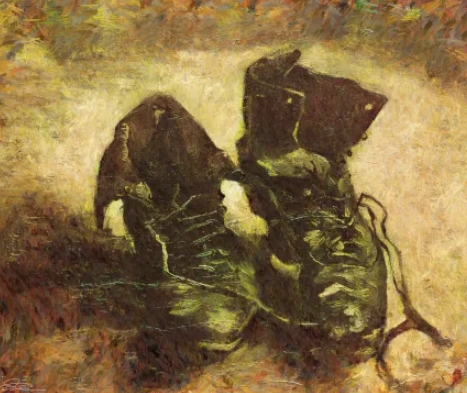Vincent van Gogh is one of the most well-known and influential artists in history. His unique style and emotional depth have captivated art lovers for decades. One of his most iconic works is the painting titled “Peasant Shoes,” which offers a glimpse into the simple but challenging lives of agricultural workers in 19th-century France.
A Glimpse into Van Gogh’s World
Van Gogh created “Peasant Shoes” in 1888 during his time living in the French countryside. The painting features a pair of worn and weathered shoes, placed side by side on a simple wooden floor. The stark simplicity of the composition highlights the beauty in everyday objects and the dignity of those who wear them.
Symbolism and Meaning
The shoes in the painting are not just objects; they are symbols of hard work, resilience, and the struggle for survival. Van Gogh was deeply empathetic towards the plight of the rural poor, and his choice to depict their shoes reflects his desire to give a voice to those often overlooked by society.
The Color and Texture
Van Gogh’s use of thick, expressive brushstrokes and vibrant colors adds a sense of vitality and movement to the painting. The rough texture of the paint conveys the roughness of the shoes themselves, as well as the harshness of the lives of those who wore them.
A Legacy of Empathy
“Peasant Shoes” is a testament to Van Gogh’s deep empathy for the downtrodden and his commitment to capturing the beauty and dignity of everyday life. The painting continues to inspire viewers to see the world through a lens of compassion and understanding.
In conclusion, Van Gogh’s “Peasant Shoes” is a powerful reminder of the enduring impact of art and the ability of a simple painting to evoke complex emotions and spark meaningful conversations. Van Gogh’s legacy lives on through this iconic work, which continues to resonate with audiences all around the world.


